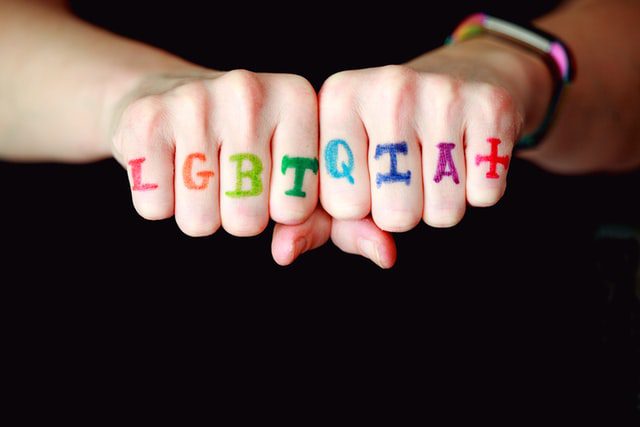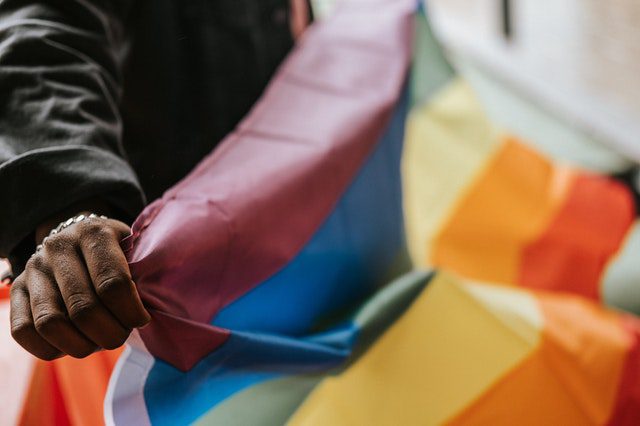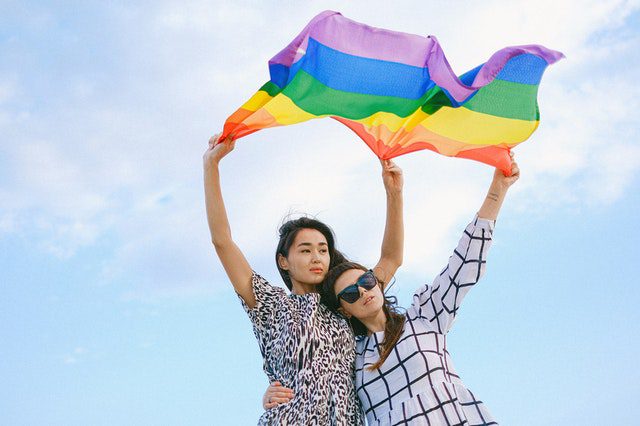
The LGBTQIA+
The LGBTQIA+ acronym is used as an umbrella term to describe the gender identity and sexual orientation of people. Each letter in the acronym represents a section of the community.
LGBTQIA+ was made to be a more inclusive acronym, and it is a variation of the most common acronym LGBT. Pride month is used to celebrate everyone in the LGBTQIA+ community.

History
Initially, the word ‘homosexual’ was used to describe people who form an emotional attraction or sexual attraction towards persons of the same gender. However, this soon developed a negative connotation, and the term ‘Gay’ became more popular during the 1970s. Later, both the terms ‘Gay’ and ‘Lesbian’ became common.
In the late 1970s and early 1980s, people who identify as Bisexual and Transgender began seeking the same public recognition. The acronym ‘LGBT’ (Lesbian, Gay, Bisexual, Transgender) was first used by activists in 1988. However, it was only in the 1990s that Lesbian, Gay, Bisexual, and Transgender people were all treated with equal respect in the community.
While it is generally accepted that LGBT also refers to those not included in the four letters, the fact that it is not an all-inclusive acronym has led people to add a few more letters, and in doing so, come up with newer variations with fewer limitations. For example, in 2016, GLAAD came up with LGBTQ, where the ‘Q’ refers to people in the queer community (in other words, Lesbian, Gay, Bisexual, Transgender, Queer). Later, a plus sign was added to LGBTQ+ to represent all those not listed in the acronym already.
The acronym is constantly evolving; however, the latest and most widely accepted variation is LGBTQIA+.
What LGBTQIA+ Stands For
The letters in LGBTQIA+ stand for different things.
No list can ever be fully exhaustive. That is because so many people identify with gender roles and sexual orientations that have yet to be named or need no name. However, here follows a list of terms that are generally accepted as included in the acronym.
LGBTQIA
L – Lesbian
This term describes women who experience sexual attraction and romantic attraction towards other women.
G – Gay
Initially used for both men and women, this term is generally used to describe men who are romantically or sexually attracted to other men.
B – Bisexual
This term describes anyone who is sexually or emotionally attracted to more than one gender.
It is most often used to refer to a person who is attracted to both men and women. However, it has been criticized for reinforcing a non-inclusive gender binary.
It was also incorrectly dubbed a midpoint between heterosexuality and homosexuality in the past.
T – Transgender
Transgender is a term used to describe anyone who identifies with another gender identity other than the sex assigned at birth. In other words, if a person’s gender identity is female, but the person’s assigned sex at birth was male or vice versa.
A Transgender person can be someone who has not transitioned, are busy transitioning, and has completed the transition from assigned male to female (or indeed assigned female to male).
Transgender people can also be Gender Non-conforming, but this is not always the case.
Q – Queer / Questioning
Another umbrella term often used to describe people in the LGBTQIA+ community is Queer. Queer people are people who identify as anything other than heterosexual and cisgender.
However, in the past, Queer has also been used as a slur against people in the community. Since then, it has been reclaimed, yet there are still those who believe it to be derogatory.
Queer is also sometimes used to describe someone who rejects any kind of label. This could be sexual orientation or gender identity but can also include social norms, specific gender norms, and stereotypical/ conventional ideas around masculinity or femininity.
For example, a woman who is not afraid to embrace her so-called masculine side without feeling that her gender identity or sexual orientation is being threatened can be considered Queer. Likewise, a man who breaks the conventions of what society deems typical male behavior, dress sense, or other forms of expression can be considered Queer.
I – Intersex
The term Intersex does not refer to someone’s gender identity or their sexual orientation. Intersex people are born with biological traits in terms of gender/sex that are not typically associated with female or male gender identities. Therefore, it is different from Transgender, and there are many different intersex variations that can occur naturally at birth.
A – Asexual / Ally
Asexual people in the community are those who experience little to no sexual desire, whether they are interested in forming romantic relationships or not. Romantic orientation is entirely different from sexual orientation. Asexuality does not affect someone’s sexual orientation, gender expression, or gender identity. A person who sometimes experiences asexuality and other times experiences sexual attraction is referred to as a Graysexual person.
An Ally is someone who identifies as cisgender or heterosexual but who supports the LGBTQIA+ community and believes in equal legal rights and opportunities for everyone. In addition, an Ally is anyone who fights for social justice alongside LGBTQIA+ people and helps to raise awareness or end oppression.
The +
Pansexual
Pansexuality refers to anyone who experiences emotional attraction or sexual attraction towards two or more genders. In general, pansexual people feel attraction towards someone for their personality traits, regardless of where they fall on the gender spectrum. Therefore, many people believe that Pansexuality is a more inclusive term than Bisexuality.
Demisexual
A Demisexual person is someone who needs to form a strong emotional bond with someone before the person feels sexual attraction towards them, even though this bond need not be romantic.
Cisgender
Cisgender people identify with the same gender as the one they were assigned to at birth.
Non-Binary
This term is used to refer to people who identify with something outside the conventions of gender identity. For example, it refers to someone who identifies with a gender that falls outside the gender binary (i.e., Male and Female) and may prefer gender-neutral pronouns (They/Them).
Genderfluid
This is someone who has a fluid or fluctuating gender identity. For example, such a person may identify and express themselves as female, another day as male, or neither.
Two-Spirit
This is a term used by some Indigenous people to refer to someone with both a masculine and feminine spirit. It may also be used as an umbrella term to refer to many different people in the LGBTQIA+ community.

LGBTQIA+ FAQs
When is Pride month?
Pride month is traditionally celebrated in June, and the 26th of June is LGBTQIA+ Equality Day.
When is Intersex Awareness Day?
Since 1996, Intersex Awareness Day has been celebrated on the 26th of October. It is the anniversary of the first public Intersex demonstration in the United States.



